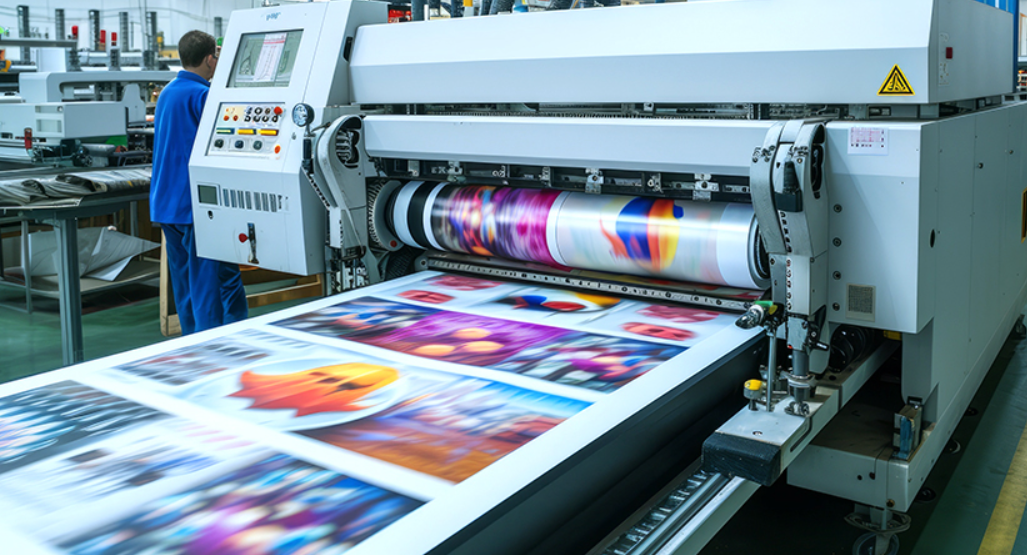In a world where packaging plays a vital role in brand identity, shelf appeal, and consumer engagement, digital printing for flexible packaging is revolutionizing how products are presented and marketed. From startups to global brands, companies are embracing digital printing as a cost-effective, fast, and customizable solution for creating eye-catching flexible packaging that stands out.
Whether you’re in food, cosmetics, pharmaceuticals, or pet products, digital printing offers unparalleled flexibility, vibrant color reproduction, and low minimum order quantities (MOQs). In this article, we explore the benefits, process, applications, and future of digital printing in the flexible packaging industry.
What Is Flexible Packaging?
Flexible packaging refers to any packaging made from pliable materials like plastic films, foil, or paper. It adapts to the shape of the product, offering lightweight and efficient solutions for packaging goods. Common formats include:
-
Stand-up pouches
-
Resealable zipper bags
-
Sachets
-
Wraps and roll stock
-
Retort pouches
Flexible packaging is widely used across industries for its versatility, barrier protection, and ease of storage and transport.
What Is Digital Printing in Packaging?
Digital printing is a method that prints digital images directly onto packaging materials without the need for traditional plates or cylinders. Unlike flexographic or rotogravure printing, digital printing is ideal for short to medium runs, faster turnaround times, and variable data printing.
Digital printers use inkjet or electrophotographic technology to produce high-resolution graphics on films like polyethylene, PET, BOPP, and more.
Benefits of Digital Printing for Flexible Packaging
1. Short-Run Efficiency
Digital printing eliminates the need for setup plates, making it ideal for limited-edition packaging, seasonal products, or market testing. Brands can launch new designs quickly without large capital investment.
2. High-Quality Graphics
Digital presses offer photographic-quality resolution and vibrant color accuracy. With 1200 DPI or higher, you can achieve detailed imagery, smooth gradients, and crisp text that enhance shelf appeal.
3. Fast Turnaround Time
Traditional print methods require days or weeks for plate-making and setup. Digital printing can reduce lead times to just a few days, accelerating time-to-market for new product launches.
4. Customization and Variable Data Printing
Digital printing supports on-the-fly customization. This includes:
-
Personalized product packaging
-
Unique QR codes or barcodes
-
Batch numbering
-
Limited edition runs
This feature is particularly valuable for promotional campaigns, regional packaging, and customer engagement.
5. Sustainability and Waste Reduction
With no plates or excess inventory, digital printing reduces material waste. Additionally, digital printers often use low-VOC, food-safe inks, making the process more environmentally friendly.
6. Cost-Effective for Small to Medium Volumes
For businesses that don’t require massive volumes, digital printing minimizes startup costs and inventory risks by allowing smaller order sizes at competitive prices.
Common Applications of Digital Printing in Flexible Packaging
Food and Beverage
Brands can create custom pouches or sachets for snacks, coffee, spices, or ready-to-eat meals. Digital printing ensures compliance with FDA labeling while delivering standout visuals.
Pet Food
Pet brands benefit from resealable, flexible stand-up pouches with high-resolution pet images, product info, and easy-open features.
Health and Wellness
From vitamin sachets to protein powder pouches, digital printing enables clean, minimalist designs or bold visuals that speak to health-conscious consumers.
Cosmetics and Skincare
For trial packs or promotional kits, digital printing offers premium design quality without the overhead of long print runs.
Special Editions and Promotions
Brands launching holiday-themed packaging, limited flavors, or influencer collaborations can use digital printing for agile production and market testing.
How Digital Printing Works on Flexible Packaging
1. Design Upload
Designs are submitted digitally, eliminating the need for expensive and time-consuming plate creation.
2. Substrate Selection
Manufacturers choose the appropriate flexible film—such as PET, PE, or foil-laminated material—based on product requirements (e.g., barrier properties, sealing ability).
3. Printing
Digital printers (typically inkjet or laser-based) print directly onto the material with precise color registration and minimal waste.
4. Finishing
The printed film may undergo lamination, slitting, or pouch-making, depending on the final format.
5. Quality Control
Advanced digital systems include in-line inspection to ensure color accuracy and registration consistency throughout the run.
Trends Shaping the Future of Digital Flexible Packaging
1. Personalized Packaging
With growing demand for one-to-one marketing, digital printing makes personalized packaging viable at scale. Think names, messages, or designs tailored to specific customers.
2. Smart Packaging
Brands are incorporating scannable QR codes, augmented reality, and variable data into digitally printed packaging for better engagement and traceability.
3. On-Demand Production
Digital printing supports lean manufacturing and just-in-time production models, helping brands reduce storage costs and avoid obsolete inventory.
4. Sustainable Materials
Digital printing continues to evolve to accommodate recyclable and compostable films, aligning with global sustainability goals.
Choosing a Digital Flexible Packaging Partner
When selecting a packaging supplier for digital printing, consider the following:
-
Experience with Flexible Films: Ensure the printer has expertise in handling complex substrates.
-
Certifications: Look for food-grade compliance (FDA, BRC, ISO), especially for consumables.
-
Customization Options: Ensure they offer variable data, specialty finishes, and low MOQs.
-
Speed and Support: Turnaround time and customer service are critical, especially for startups and seasonal brands.
Final Thoughts
Digital printing flexible packaging is reshaping how businesses approach branding, product launches, and sustainability. It empowers companies to be more agile, creative, and customer-focused—without the overhead of traditional printing methods.
Whether you’re a growing e-commerce brand or a legacy company introducing new SKUs, digital printing offers the perfect combination of quality, flexibility, and speed to help your products shine on the shelf and in the customer’s hands.
